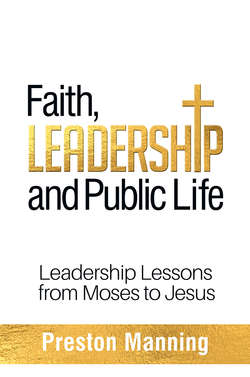Читать книгу Faith, Leadership and Public Life - Preston Manning - Страница 9
На сайте Литреса книга снята с продажи.
ОглавлениеMight not the results be more like those achieved by Jesus of Nazareth—minds and hearts of ordinary, busy, and distracted human beings moved and changed for the better by a unique and authentic style of communication?
4 Esther 4:14.
5 Luke 3:1–2.
6 Luke 4:16–21.
7 John 2:4.
8 John 7:6.
9 John 13:1–3.
10 John 1:1–14.
11 Galatians 4:4–5.
12 “Jesus spoke all these things to the crowd in parables; he did not say anything to them without using a parable” (Matthew 13:34; see also Mark 4:34). When his disciples asked, “Why do you speak to the people in parables?” he replied that it was both to enlighten and to obscure (Matthew 13:10–13).
13 “The Pharisees were a religious party or school among the Jews at the time of Christ, so called from the Aramaic form of the Hebrew perushim, the separated ones. This name may have been given them by their enemies, as they usually called themselves Haberim, associates. They were formalists, very patriotic but bigoted in their patriotism as in their religion. Their political influence was great, though they were only about 6000 to 7000 in number. Jesus denounced the Pharisees for their hypocrisy, which was shown by their care for the minutest formalities imposed by the traditions of the elders, but not for the mind and heart which should correspond. They were ambitious, arrogant, and proudly self-righteous, all of which qualities were contrary to the teachings of Jesus. This explains in part their intense hostility to him” (Alexander Cruden, Cruden’s Complete Concordance to the Bible [Toronto: G.R. Welch Company Limited, 1980], 494).
14 Note that this form of communication is not simply finding out what people want to hear and then communicating that to them—a communication style to which unprincipled politicians are particularly prone. The receiver-oriented communicator has definite communication objectives and distinctive messages to offer, some of which the audience may definitely not want to hear but should. The difference between the source-oriented communicator and the receiver-oriented communicator is that the latter has the audience rather than himself or herself much more in mind at every stage of the preparation and delivery of the communication.
15 In my own experience with public communication, first as a management consultant and then as a candidate for public office and a politician, I first began to use a receiver-oriented communication planning framework in meeting the challenges of cross-cultural communication on behalf of energy companies with Indigenous people. I then began to use this same communication planning framework in preparing my speeches to public audiences as a candidate for public office and as a political leader, including most of my addresses in the Canadian House of Commons.
16 “The common people heard him gladly” (Mark 12:37 [KJV]).
17 “The people were amazed at his teaching, because he taught them as one who had authority, and not as the teachers of the law” (Mark 1:22). Much of this perceived “authority” came from the content and style of his communication rather than from his position in society.
18 John 7:46.
19 Some may argue that the existence of modern communication technology—in particular radio, television, the Internet, and social media—has so radically changed public communication that the example of Jesus, whose primary method of communication was in direct personal contact with his audiences, is no longer relevant. This is not the place to address this concern fully, but I would suggest that one of the major effects (and problems) with modern communication technology is that while it greatly broadens the ability of the source to reach multitudes of receivers, it tends to depersonalize the relationship and increases rather than decreases the distance between source and receiver. Consequently, modern communicators using modern technology will be more believable and effective if they embody the truths they are attempting to communicate, have fully immersed themselves in their receivers’ world, and employ to the maximum extent possible the conceptual frameworks and vocabulary of their audiences—the distinguishing characteristics of Jesus’ incarnational communication.
